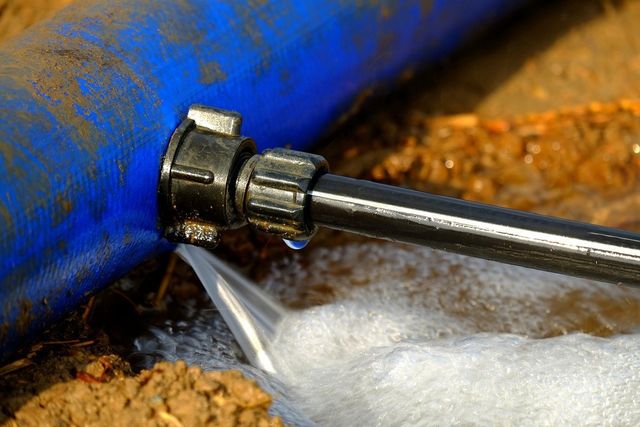Exactly how to Inspect If Your House Has a Concealed Leak
Exactly how to Inspect If Your House Has a Concealed Leak
Blog Article
We have come across this post involving Finding hidden leaks below on the net and felt it made good sense to share it with you over here.

Early detection of dripping water lines can reduce a possible catastrophe. Some little water leakages may not be visible.
1. Analyze the Water Meter
Examining it is a proven way that assists you uncover leakages. If it moves, that shows a fast-moving leakage. This implies you may have a slow-moving leakage that can also be underground.
2. Inspect Water Intake
Evaluate your water costs and track your water consumption. As the one paying it, you must see if there are any inconsistencies. If you detect sudden changes, despite your consumption being the same, it implies that you have leaks in your plumbing system. Keep in mind, your water costs need to drop under the same array every month. An unexpected spike in your expense suggests a fast-moving leak.
Meanwhile, a constant rise monthly, despite the same behaviors, shows you have a slow-moving leakage that's also gradually escalating. Call a plumber to thoroughly check your property, especially if you really feel a cozy location on your floor with piping underneath.
3. Do a Food Coloring Test
When it comes to water usage, 30% comes from commodes. Examination to see if they are running effectively. Decrease specks of food color in the container as well as wait 10 mins. There's a leakage between the tank and also dish if the color in some way infiltrates your dish throughout that time without flushing.
4. Asses Outside Lines
Do not neglect to examine your exterior water lines also. Must water seep out of the connection, you have a loosened rubber gasket. One little leakage can lose heaps of water as well as surge your water costs.
5. Analyze the scenario as well as inspect
Homeowners need to make it a routine to check under the sink counters and also even inside closets for any type of bad odor or mold and mildew development. These two warnings indicate a leakage so prompt interest is required. Doing routine inspections, also bi-annually, can conserve you from a significant trouble.
If you recognize your home is already old, maintain a careful eye on your heaters, tubes, pipes etc. Check for discolorations as well as deteriorating as the majority of pipelines as well as devices have a life span. They will certainly likewise normally degrade because of tear as well as wear. If you suspect dripping water lines in your plumbing system, do not await it to escalate. Call an expert plumber right now so you do not end up with a horrible mess in your home.
Early discovery of dripping water lines can mitigate a prospective calamity. Some small water leaks may not be visible. Checking it is a guaranteed means that aids you discover leakages. One small leak can waste bunches of water and increase your water costs.
If you suspect dripping water lines in your plumbing system, do not wait for it to escalate.
WARNING SIGNS OF WATER LEAKAGE BEHIND THE WALL
PERSISTENT MUSTY ODORS
As water slowly drips from a leaky pipe inside the wall, flooring and sheetrock stay damp and develop an odor similar to wet cardboard. It generates a musty smell that can help you find hidden leaks.
MOLD IN UNUSUAL AREAS
Mold usually grows in wet areas like kitchens, baths and laundry rooms. If you spot the stuff on walls or baseboards in other rooms of the house, it’s a good indicator of undetected water leaks.
STAINS THAT GROW
When mold thrives around a leaky pipe, it sometimes takes hold on the inside surface of the affected wall. A growing stain on otherwise clean sheetrock is often your sign of a hidden plumbing problem.
PEELING OR BUBBLING WALLPAPER / PAINT
This clue is easy to miss in rooms that don’t get much use. When you see wallpaper separating along seams or paint bubbling or flaking off the wall, blame sheetrock that stays wet because of an undetected leak.
BUCKLED CEILINGS AND STAINED FLOORS
If ceilings or floors in bathrooms, kitchens or laundry areas develop structural problems, don’t rule out constant damp inside the walls. Wet sheetrock can affect adjacent framing, flooring and ceilings.
https://www.servicemasterbyzaba.com/blog/how-to-detect-water-leakage-in-walls/

I recently found that piece about Finding hidden leaks when perusing the internet. So long as you appreciated our post plz don't forget to pass it around. Thanks a lot for your time. Please pay a visit to our website back soon.
Report this page